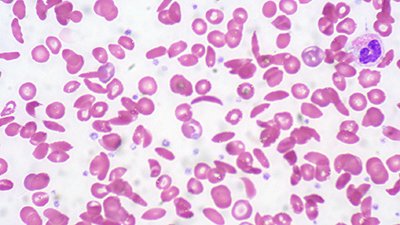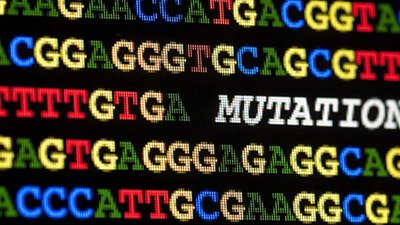Mutational Secrets of a Virus
Series of mutations said to evolve a “key innovation”1
News Source
- Science Daily: “How Viruses Evolve, and in Some Cases, Become Deadly”
By observing the development of a successful way for a virus to fool a bacterial receptor, researchers say they have observed evolution in real time and shown how key innovations can evolve. Even though the ability to bind to the bacterial receptor required four mutations, the innovation was achieved. The Michigan State researchers report they have elucidated “the complex interplay between genomic processes and ecological conditions that favor the emergence of evolutionary innovations.”2
“We were surprised at first to see Lambda evolve this new function, this ability to attack and enter the cell through a new receptor--and it happened so fast,” lead author Justin Meyer said. “But when we re-ran the evolution experiment, we saw the same thing happen over and over.”
The study involved culturing a lambda virus with resistant E. coli bacteria. A small percentage of the viral population demonstrated the ability to enter the bacteria through a receptor other than the one this virus usually attacks. This ability spread through the viral population. The modification required to fool the receptor involved four separate mutations. Natural selection presumably can only act on the fully mutated form of the virus, but the researchers found that the first step in the series of mutations offered survival advantages of a different sort. Furthermore, the ability of the virus to develop virulence was also affected by the characteristics of the E. coli. Therefore, the researchers believe their study can help in the understanding of co-evolution.
The authors note, “Processes responsible for the evolution of key innovations, whereby lineages acquire qualitatively new functions that expand their ecological opportunities, remain poorly understood.”3 They admit the need for observable, repeatable scientific trials. And they say, “Microbes are well suited for such research because their evolution can be observed in real time, experiments are easily replicated, and transitional states can be studied by reviving samples stored at different times during an experiment.”4 All these statements demonstrate sound scientific method. And the researchers designed an elegant series of experiments to demonstrate the complex molecular and genomic changes involved in diversification of this virus. However, the evolution of new kinds of organisms was not demonstrated here. The viruses were still lambda viruses and the bacteria were still E. coli.
What this study illustrates is the fact that natural selection can operate on a series of mutations and even on other organisms to produce a population change with a noticeably new characteristic.
The researchers also did not demonstrate specifically how the viruses acquired or passed around this information, but the viruses in the initial test consistently showed that a small percentage already possessed the needed mutation. Furthermore, microbes like these tend to pass genetic information between themselves using horizontal gene transfer. What this study illustrates is the fact that natural selection can operate on a series of mutations and even on other organisms to produce a population change with a noticeably new characteristic. Yet for all that, the result was diversity within a kind.
God created all things in the beginning. He designed organisms to reproduce after their kinds and to be able to adapt and vary. We can be confident that the roles of microbes—even viruses, not technically “alive” by our definitions—in the original Creation were not detrimental because God pronounced His Creation good. The ability to vary using horizontal gene transfer, mutations, and other mechanisms has facilitated microbial survival for six thousand years but not evolution into different kinds of creatures.
Further Reading
For More Information: Get Answers
Remember, if you see a news story that might merit some attention, let us know about it! (Note: if the story originates from the Associated Press, FOX News, MSNBC, the New York Times, or another major national media outlet, we will most likely have already heard about it.) And thanks to all of our readers who have submitted great news tips to us. If you didn’t catch all the latest News to Know, why not take a look to see what you’ve missed?
(Please note that links will take you directly to the source. Answers in Genesis is not responsible for content on the websites to which we refer. For more information, please see our Privacy Policy.)
Footnotes
- Justin R. Meyer et al., “Repeatability and Contingency in the Evolution of a Key Innovation in Phage Lambda,” Science 335, no. 6056 (January 27, 2012): 428–432, 10.1126/science.1214449.
- Ibid.
- Ibid.
- Ibid.
Recommended Resources

Answers in Genesis is an apologetics ministry, dedicated to helping Christians defend their faith and proclaim the good news of Jesus Christ.
- Customer Service 800.778.3390
- © 2024 Answers in Genesis








